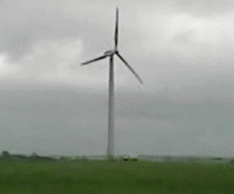 Of the scores of old and new battle tanks on open-air display at the Israeli Armored Corps museum at Latrun, west of Jerusalem, only the M-4 Sherman gets a tall pedestal and flood-lamps to spotlight it by night.
Of the scores of old and new battle tanks on open-air display at the Israeli Armored Corps museum at Latrun, west of Jerusalem, only the M-4 Sherman gets a tall pedestal and flood-lamps to spotlight it by night.
The modified M-4 was Israel’s mainstay in the wars of 1948 and 1956 and was still in use in the wars of 1967 and 1973. So it gets official reverence, anyhow, even if some of its crews probably hated it as much or more than some American veterans of World War II who considered it outclassed by German armor.
But the tank that once graced the lawns of most National Guard armories across the U.S. (now replaced, for the most part, by M-48 Pattons) still has its defenders. Some of them recently unloaded on Death Traps, a new World War II memoir about the problems of maintaining the under-armored and under-gunned beasts. They were, of course, appropriately named for an American Civil War general who was also quite controversial.

















Shermans were used by a lot of countries during and after the War. This included Russia where had shipped hundreds of Shermans as part of Lend-Lease Aid
Probably only until they could replace them with their superior T-34s.
Actually, the Russians used the Shermans with its superior mobility to maneuver through terrain that was too rough for the bigger T-34s throughout the War. There was a memoir written in the 1990s by a Russian officer who had commanded a platoon of Shermans in 1944-45. Unfortunately I cannot recall his name or the title of his book. During the post-war years Shermans were shipped to lot of countries because there were so many of them left over from the War, that they were an inexpensive form of military aid. There was one group of Shermans that were sent to the Russians during the War. In the 50s, the Russians gave them to the Egyptians. There were capture by Israel in the Six-Day War who then gave them to Uganda. These Shermans were then used by the head of the Ugandan Army, Idi Amin, to seize power in January 1971!
There were other equipment sent to the Russians during the War that had a long life afterwards. The Studebaker trucks turned out to be most reliable trucks, the Russians had. Even 20 years after the War, there were plenty of Studebaker trucks going on the rugged roads throughout the Soviet Union.
While we’re trading unsourced remarks on the Sherman, I recall the contents of one to the effect that Israeli tank crews assigned to the Super Shermans in 1967 refused to advance in them. They preferred courts martial to certain death.
The book mentioned in previous comment is “Commanding the Red Army’s Sherman Tanks” by Dimitriy Loza. (1996)
Had not heard about Israeli tank crews in 1967 refusing to go into battle in the Super Shermans. It may have happen though. In 1944-45 at least some Sherman and British Cromwell tank crews openly complained that their tanks were death traps. In the Six Day War, the Super Shermans did see a lot of combat, particuarly in the attack on the Golan Heights on the fifth day, June 9th, where the Shermans led the attack because the terrain was too step for the Centurion and Patton tanks. The Shermans did suceed in leading the Israeli Infantry to the top of Golan Heights though at a heavy cost.